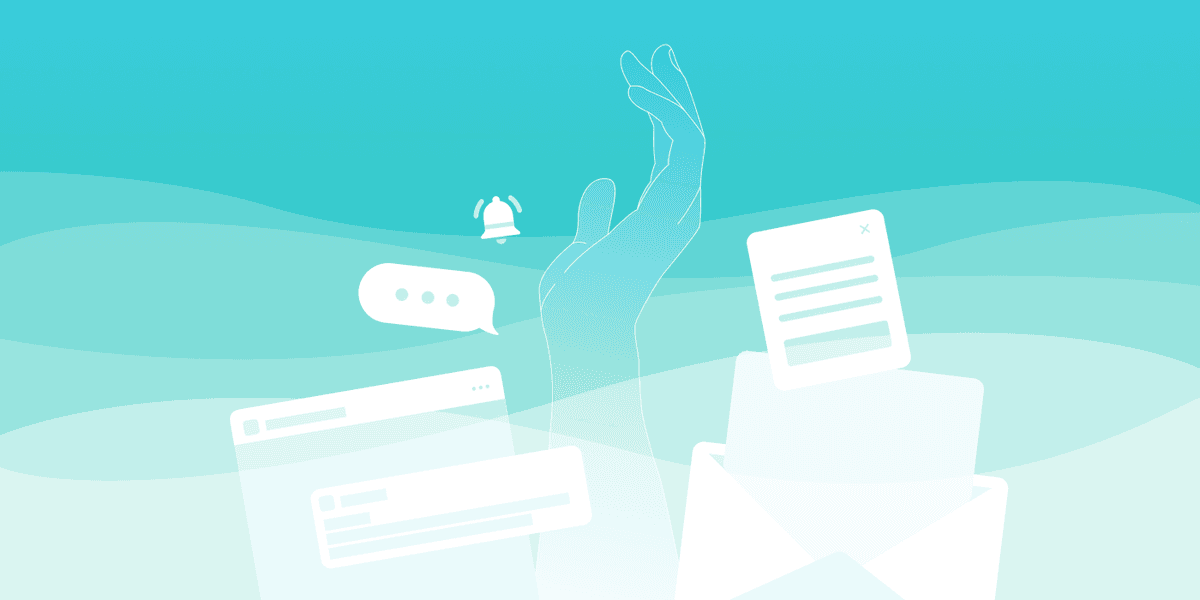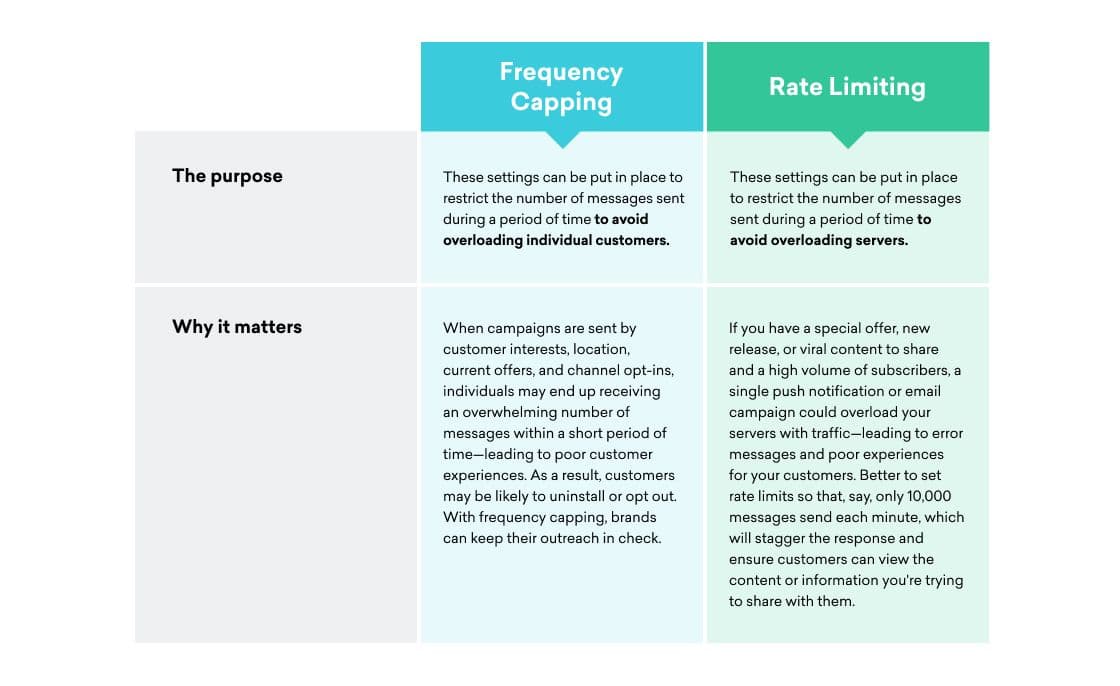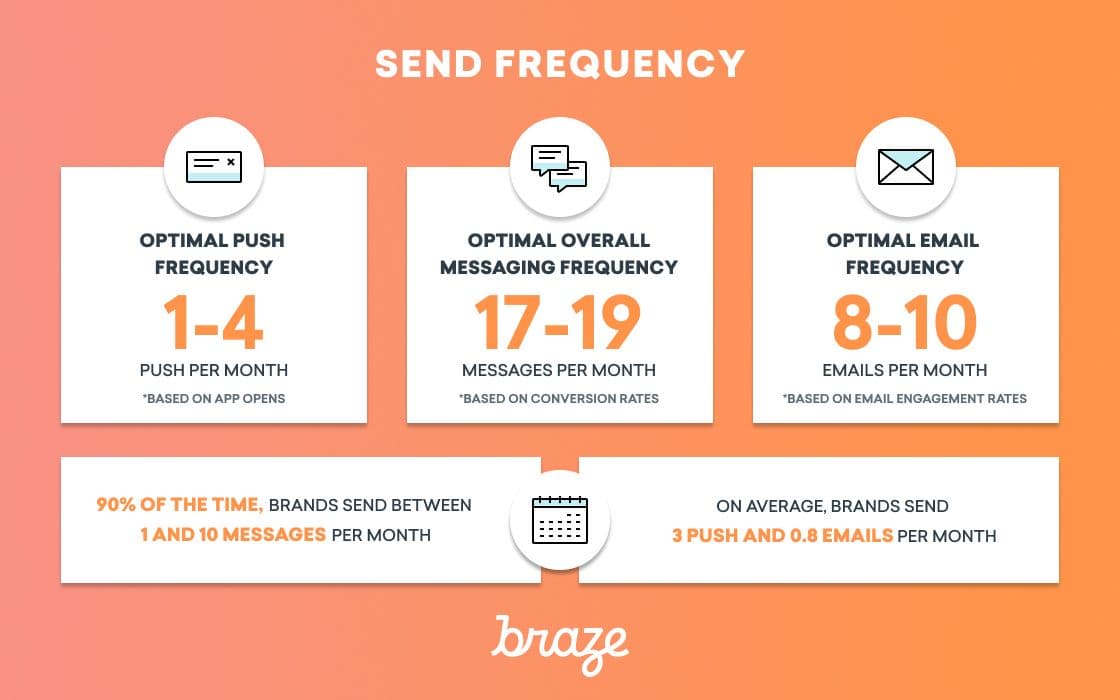What’s Frequency Capping?
Published on November 04, 2020/Last edited on November 04, 2020/4 min read


Mary Kearl
WriterIf you've ever found yourself the overwhelmed recipient of too many push notifications, emails, and texts—all from the same brand and all received within a matter of hours—then you'll understand the power of frequency capping.
Frequency capping is one of the key checks and balances every marketer needs to ensure they're reaching out to customers at a desirable cadence—checking in enough to keep individuals informed, entertained, and engaged, but without burying them in updates.
Within the context of digital advertising, frequency capping allows brands to set a maximum number of times their ads will be shown to any given customer within a given timeframe. For customer engagement, frequency capping works in much the same way—allowing brands to place parameters around how many messages any one individual will receive within a set time period, say no more than two emails per week or no more than one push notification per day.
Three Key Types of Message Frequency Capping
When it comes to customer engagement, Brands can apply message frequency capping limits in three common ways:
- Limiting messages deployed across all channels: Let's say you only want to reach out to customers a few times a week regardless of the number of channels they've opted into receiving updates on. In that case, you can set a cap of three messages per week across all channels. That means if someone is opted into receiving emails, mobile push notifications, and SMS, they will only receive a maximum of three messages total each week; for instance, one push notification, one email, and one text message.
- Limiting messages deployed within only one given single channel: Perhaps you have a messaging app where in-app and push notifications are an important part of how your community engages with their friends and your platform. Given that, you may want to set a cap on other channels—for instance, email—while keeping your core messaging avenues free of restrictions.
- Limiting messages by channel and across channels: This allows you to set a cap for all channels overall and a cap by channel, say a max of five messages per week across channels and no more than one text message or push notification per day. Some channels are more urgent and potentially intrusive than others (looking at you, push notifications!), so this approach allows you to cap overall message volume while also keeping certain channels on a tighter lease.
Frequency Capping vs. Rate Limiting
Frequency capping is often confused with rate limiting. While both types of settings can be animportant way to improve customer experiences, there are key differences. Here's an overview of both:

How Frequency Capping Supports Smarter Customer Engagement
Customers who opt into receiving updates from your brand over one single channel, say email or SMS, have 179% higher engagement than individuals who receive no outreach at all. That’s impactful, but the impact is even stronger if you bring in additional channels: Braze research has found that customers who engage with brands across multiple channels see up to a 844% lift in engagement compared to customers who aren't receiving any messages.
Cross-channel outreach is incredibly powerful. But overloading customers with messages can have unintended consequences. Instead of an increase in open, click, and conversion rates, brands can start to see unsubscribes and app uninstalls take off. Finding the right balance—achieving an optimal send frequency—can help brands meet customers’ needs, without overwhelming them.
Based on an analysis of 151 billion users and 534 billion messages sent over two years by nearly 700 companies across 20 different industries, Braze calculated that the following optimal send frequencies by channel (across channels) on a monthly basis in order to maximize open rates, click rates, and conversion rates, respectively:

Every brand—and every customer—is a little different. But by leveraging these benchmarks to inform your frequency capping strategy, you can reduce the chances that you’re overwhelming your users with messages, helping to ensure they remain open to the communications you send.
Next Steps
Messaging can be powerful—but not if you overdo it. Understanding how often customers want to hear from you and leveraging frequency capping to match their preferred cadence is an impactful way to provide a better customer experience.
Ideally, that approach should start at the very beginning of the customer journey. After all, every new customer you attract and acquire presents a brand new opportunity to make a strong first impression. Onboarding is crucial to improving customer lifetime value. Check out our guide, First Impressions: Why Your Brand Needs a Cross-Channel Onboarding Strategy, to learn about the six key milestones of welcoming and guiding new users through the onboarding process and how to boost engagement right from the start.
Related Tags
Be Absolutely Engaging.™
Sign up for regular updates from Braze.
Related Content
View the Blog
The new inbox reality: How iOS changes are reshaping email marketing

Aparna Prasad

Experience optimization: Turning data insights into better journeys

Team Braze

December 2025 Bonfire Marketer of the Month: Jagex’s Emma Oliver
